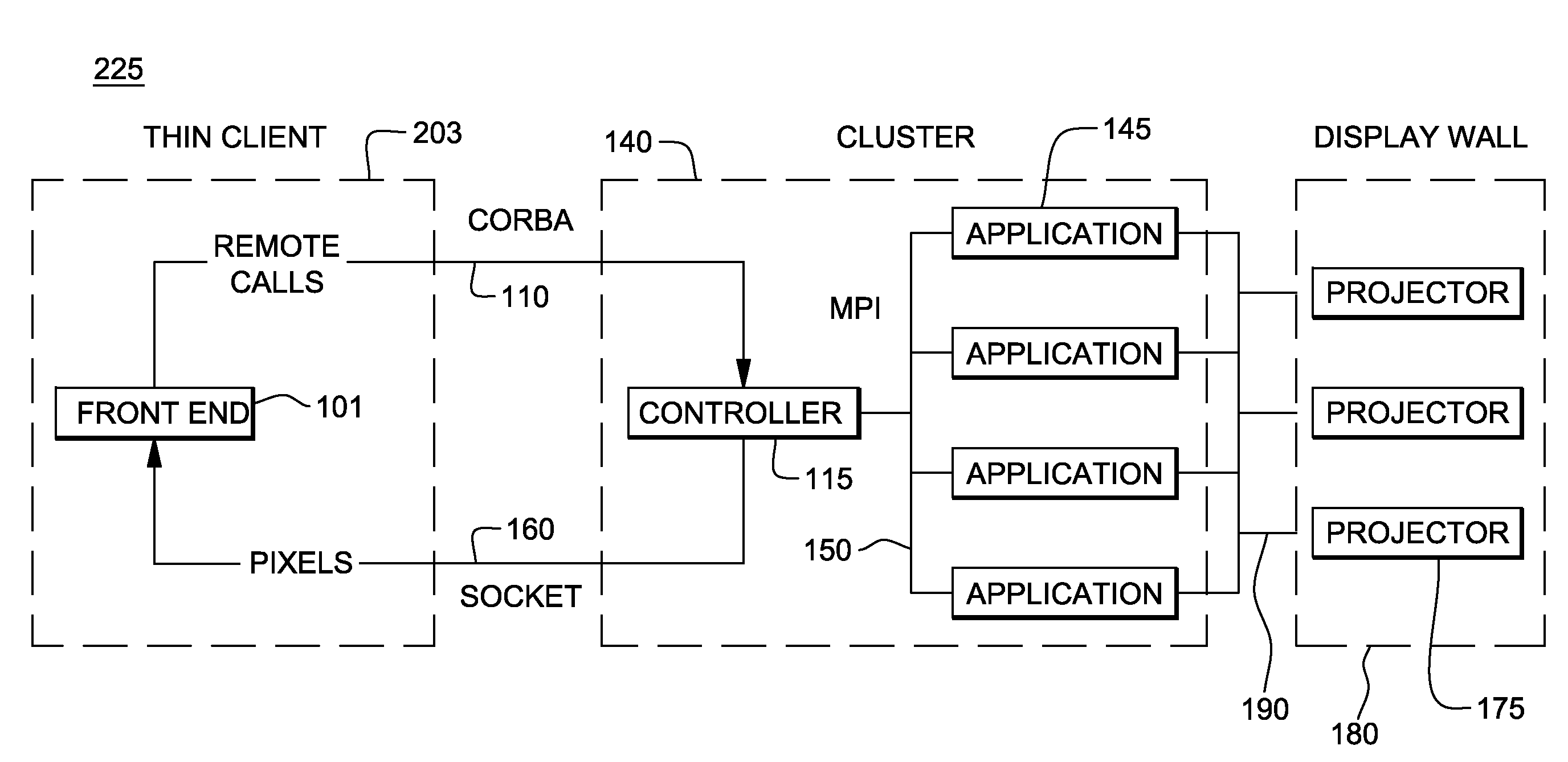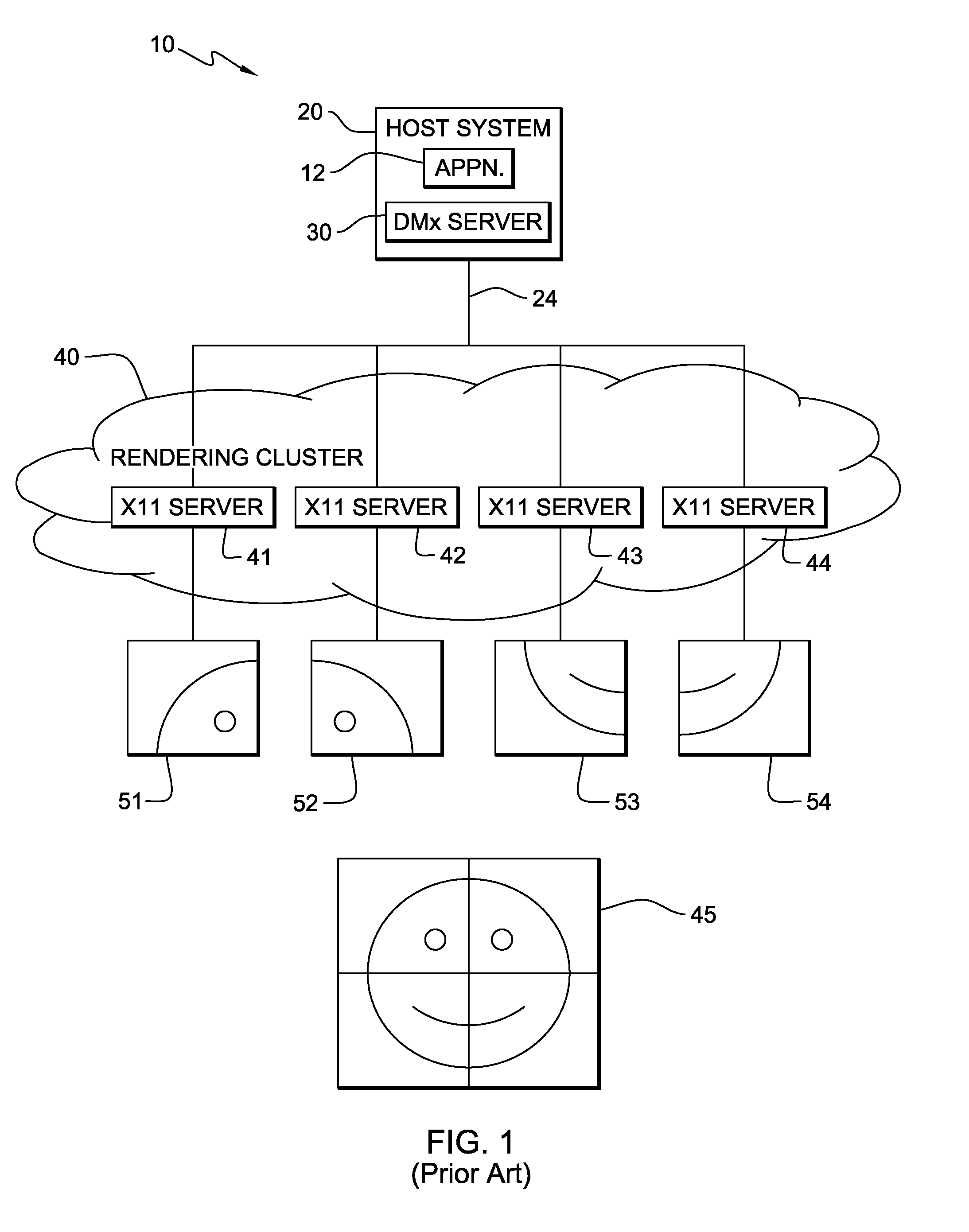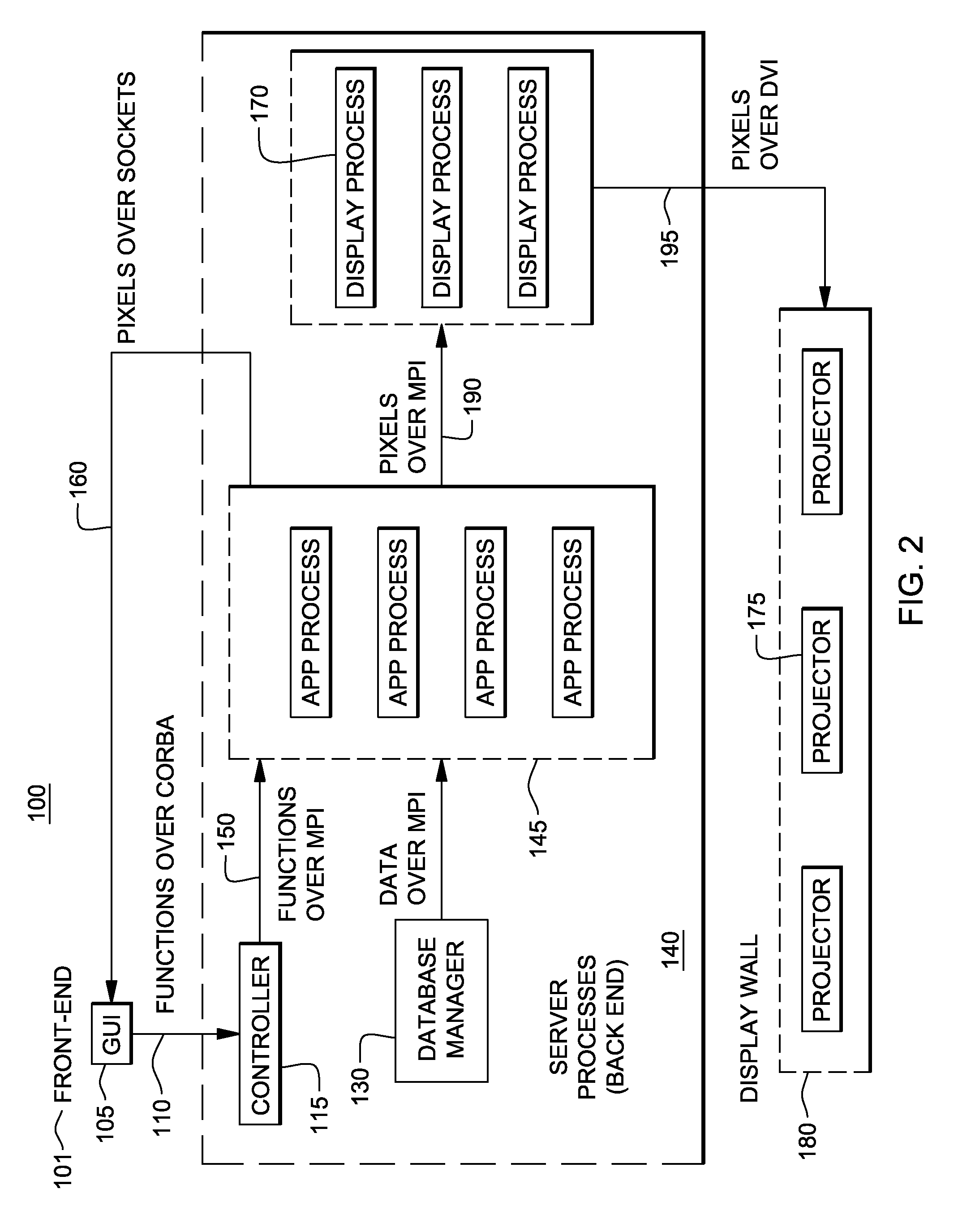System, mechanism, and apparatus for a customizable and extensible distributed rendering api
a distributed rendering and api technology, applied in the field of parallel and distributed graphics programming, can solve the problems of reducing reducing the flexibility of programming, and avoiding the benefits of using a scene-graph style data structure, so as to improve the utility and effectiveness of high-end, hide the complexity of parallel and distributed programming, and improve the effect of flexibility
- Summary
- Abstract
- Description
- Claims
- Application Information
AI Technical Summary
Benefits of technology
Problems solved by technology
Method used
Image
Examples
Embodiment Construction
[0038]As shown in FIG. 2, there is depicted a computer system-based design framework 100 enabling users, e.g., developers, to write visualization applications that take better advantage of the aggregate resources of a graphics cluster. The computer system-based design framework 100 provides a distributed parallel visualization toolkit allowing users to write complex graphics and visualization applications with little knowledge of how to parallelize or distribute the application across the graphics cluster.
[0039]More specifically, referring to FIG. 2, the design framework 100 includes a system front-end 101 implementing a graphics user interface (GUI) and display device 105 providing an interface for the user that enables access to the cluster controller functions 150 through an object interface, e.g., such as a CORBA® interface (CORBA® is a Trademark of Object Management Group, Inc., www.omg.org). Thus, the front-end 101 may be written in any language supported by the CORBA® Interfa...
PUM
 Login to View More
Login to View More Abstract
Description
Claims
Application Information
 Login to View More
Login to View More - R&D
- Intellectual Property
- Life Sciences
- Materials
- Tech Scout
- Unparalleled Data Quality
- Higher Quality Content
- 60% Fewer Hallucinations
Browse by: Latest US Patents, China's latest patents, Technical Efficacy Thesaurus, Application Domain, Technology Topic, Popular Technical Reports.
© 2025 PatSnap. All rights reserved.Legal|Privacy policy|Modern Slavery Act Transparency Statement|Sitemap|About US| Contact US: help@patsnap.com



